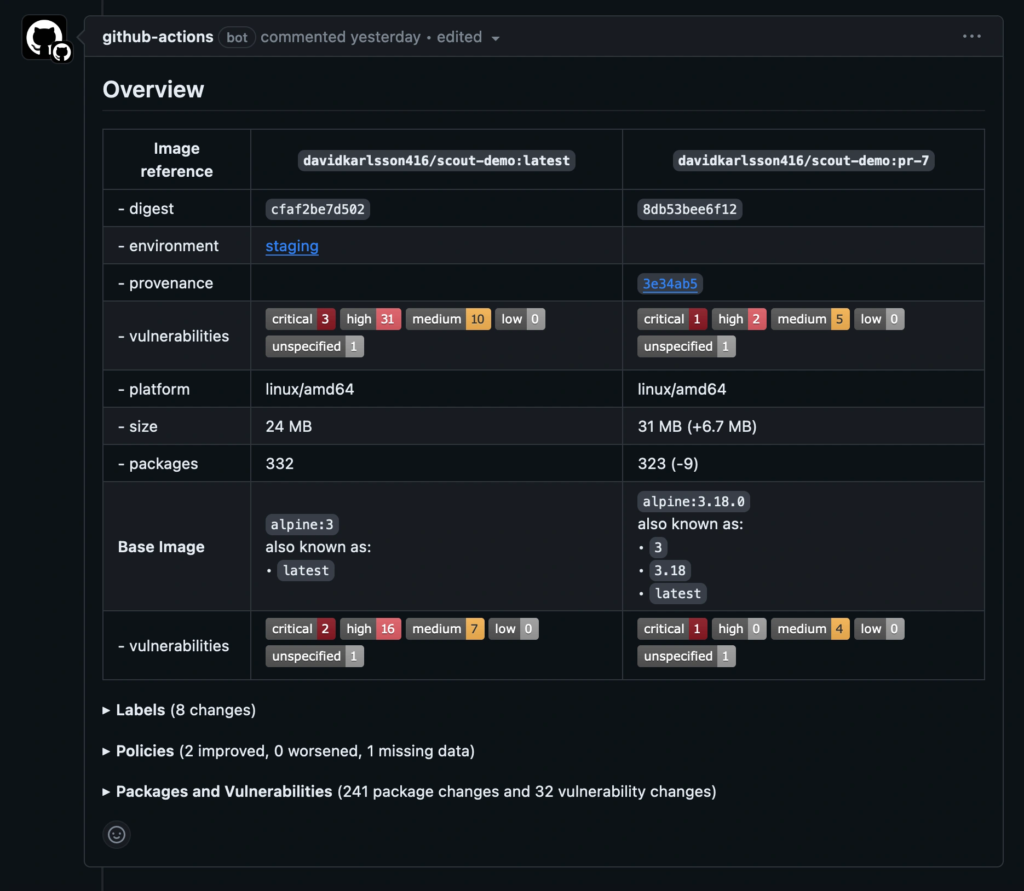tags: ${{ steps.meta.outputs.tags }}
labels: ${{ steps.meta.outputs.labels }}
cache-from: type=gha
cache-to: type=gha,mode=max
```
This creates workflow steps to:
1. Set up Docker buildx.
2. Authenticate to the registry.
3. Extract metadata from Git reference and GitHub events.
4. Build and push the Docker image to the registry.
> [!NOTE]
>
> This CI workflow runs a local analysis and evaluation of your image. To
> evaluate the image locally, you must ensure that the image is loaded the
> local image store of your runner.
>
> This comparison doesn't work if you push the image to a registry, or if you
> build an image that can't be loaded to the runner's local image store. For
> example, multi-platform images or images with SBOM or provenance attestation
> can't be loaded to the local image store.
With this setup out of the way, you can add the following steps to run the
image comparison:
```yaml
# You can skip this step if Docker Hub is your registry
# and you already authenticated before
- name: Authenticate to Docker
uses: docker/login-action@v3
with:
username: ${{ secrets.DOCKER_USER }}
password: ${{ secrets.DOCKER_PAT }}
# Compare the image built in the pull request with the one in production
- name: Docker Scout
id: docker-scout
if: ${{ github.event_name == 'pull_request' }}
uses: docker/scout-action@v1
with:
command: compare
image: ${{ steps.meta.outputs.tags }}
to-env: production
ignore-unchanged: true
only-severities: critical,high
github-token: ${{ secrets.GITHUB_TOKEN }}
```
The compare command analyzes the image and evaluates policy compliance, and
cross-references the results with the corresponding image in the `production`
environment. This example only includes critical and high-severity
vulnerabilities, and excludes vulnerabilities that exist in both images,
showing only what's changed.
The GitHub Action outputs the comparison results in a pull request comment by
default.
